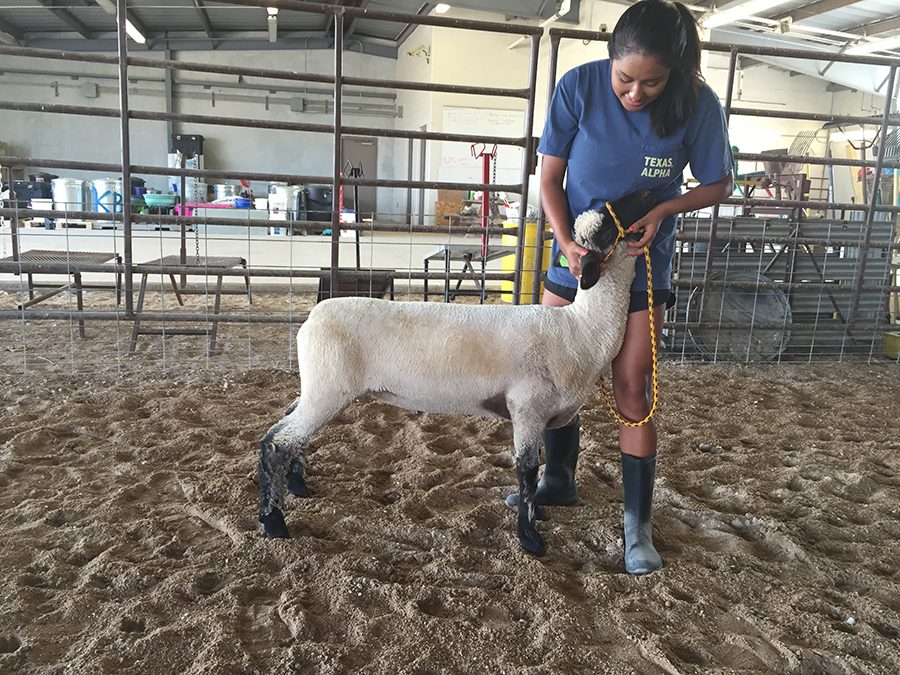What a Show
FFA members spend time outside of school caring for their animals, training them to exhibit at future contests
Agriculture provides the basis for our survival. Farmers grow the food we eat, the timber used to build our homes and the fiber we wear in our clothes. Members of the Future Farmers of America learn about these topics, but they do so much more.
Right now, FFA students are preparing for the upcoming Williamson County Livestock Show and the Greater Leander FFA show. Members are showing their animals and competing with other FFA clubs around the area.
“I’ll be showing my pig,” freshman Ashlyn Bell said. “It’s a very stressful process, but it’s also lots of fun. I’m getting to meet a lot of new people, and it’s been a good experience.”
FFA students work with their animals every afternoon, washing, feeding and walking them. They have to train their animals for show day and get them used to being around a lot of people. One of the things they do while in the classroom is learn about the proper care of their animals.
“I’m taking a veterinary medical application class this year,” senior Kaitlyn Bell said. “We talk about the health of animals because that’s a big factor that comes with showing. We learn basic animal health tips, how to give a shot and how to recognize different factors that contribute to the well being of each individual animal.”
One of the most valuable lessons in agricultural classes is responsibility. Working with animals takes patience and consistency, and showing animals requires dedication.
“Caring for animals, giving them exercise – it’s like raising a baby,” junior Christian Millard said. “The more time you spend with them, the more they learn and the better they act. So in the show ring, they act well for you and do what you tell them.”
For each show, students must prepare their animals in a certain way. The animals have to set up their feet, stand still while the judge looks them over and walk with a halter or a leash. There are a few ways to teach an animal to do this.
“You have to get the animal comfortable with you, because you don’t want it to be scared,” freshman Jason Mundt said. “It has to trust you, and once you have that relationship, you can start building from that point.”
While many FFA students like Mundt look forward to exhibiting their animals in the Williamson County Livestock show, others plan to enter non-animal related projects.
“WCLS is a big part of the year for many members, but it’s not just about animals,” junior FFA officer Jenna Hage said. “It’s cool because you can bring your floriculture projects, agriculture mechanical projects and all sorts of stuff. That adds another dimension to the show.”
The Greater Leander Show will bring more opportunities for students by providing them with opportunities to win scholarships. Like other FFA contests, many students take their earnings and put them in a fund to help pay for college, which can continue to benefit them later in life.
“Everyone definitely wants to place in the Greater Leander Show because of the earning potential,” Bell said. “I would like to place in all of the events, because our alumni pays out to any member who places high.”
Even though most FFA students are stereotyped as a group of country people, members want students to know they are much more than that. While the importance of agriculture unites them, they say it’s really a common denominator that ties them together and gives them something to advocate for.
“The FFA organization teaches students leadership qualities and skills that we will continue to use for the rest of our lives,” Hage said. “We learn these skills in the classroom and in the barn, which shapes us into decision makers and role models for the future.”



